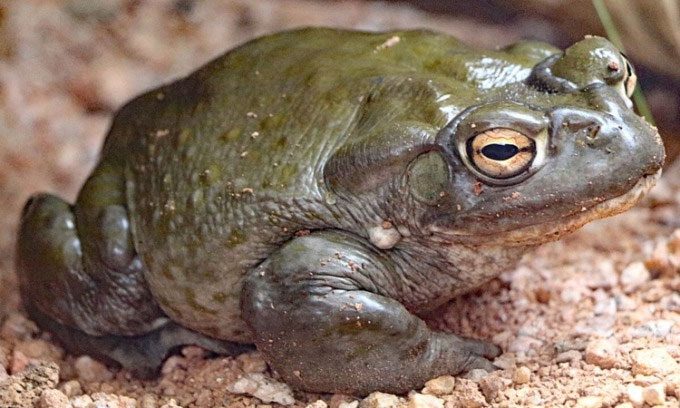As people increasingly turn to hallucinogenic drugs to treat depression and anxiety, the Sonoran Desert toad has become a target for poachers seeking to extract DMT.
Sonoran Desert toad (Incilius alvarius), also known as the Colorado River toad, typically emerges from its underground burrow at the onset of the first rains of the North American monsoon season. They are native to areas featuring saguaro cacti and desert tortoises, according to Robert Villa, president of the Tucson Herpetological Society. Although the Sonoran Desert toad is not currently endangered, it faces increasing threats from climate change, human activity, and pollution. However, the most significant danger comes from poachers specifically targeting this toad for its 5-MeO-DMT, a powerful hallucinogenic compound present in its body, according to National Geographic.

The Sonoran Desert toad is one of the largest toad species in the U.S. (Photo: Los Angeles Times).
As one of the largest toad species in America, measuring 18 cm from snout to toe, the Sonoran Desert toad emerges to feed and breed during the humid summer months, seeking water in various locations from ponds, rivers, and canals to puddles or swimming pools and golf courses. They are primarily nocturnal creatures. Once the monsoon season ends in September, the Sonoran Desert toad retreats back into its burrow.
This cycle has repeated for thousands of years in the Sonoran Desert. Researchers currently have no means to track or estimate the toad population. However, they are becoming a target for poachers, locals, and tourists eager to find the natural psychoactive compound located in the toad’s parotid glands.
Many describe the experience of trying 5-MeO-DMT as “a rocket ride into oblivion” or the most terrifying experience they have ever had. 5-MeO-DMT is legal in Mexico, where most poaching activities are concentrated, but not in the United States. In Arizona, capturing the Sonoran Desert toad without a permit is prohibited. Currently, scientists are investigating 5-MeO-DMT as a potential treatment for depression and anxiety.
Thomas Weaver, manager of HIIZ (Herpetology, Ichthyology, and Invertebrate Zoology) at the Arizona-Sonora Desert Museum, is concerned that poaching will create a chain reaction as habitats in the southwestern United States continue to warm and drought conditions prevail.
To extract 5-MeO-DMT, poachers place the toads in bags and take them to a site for “milking.” This process involves squeezing two small glands the size of a pea located on the toad’s neck to harvest the milky-white compound. When dried, this compound can be smoked or inhaled. Although this process is not harmful to the toad, milking can cause significant stress and disorientation, preventing it from finding its way back home.


















































